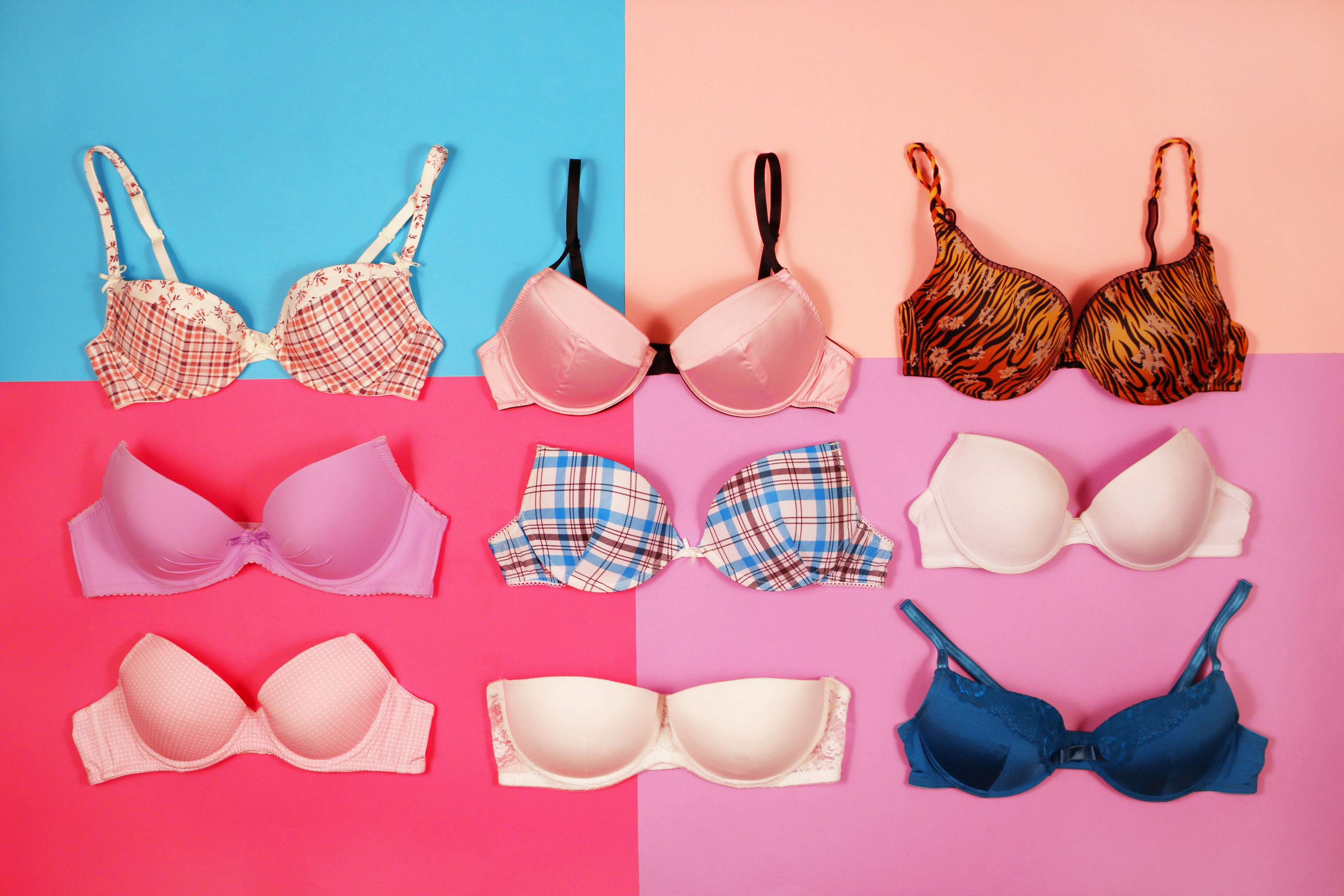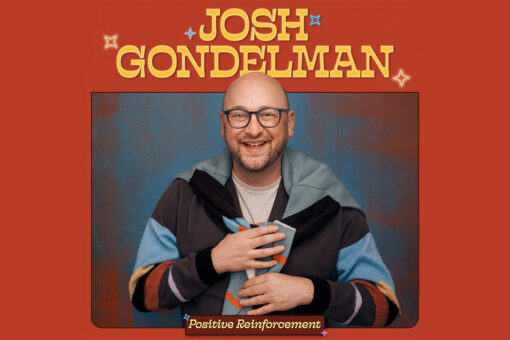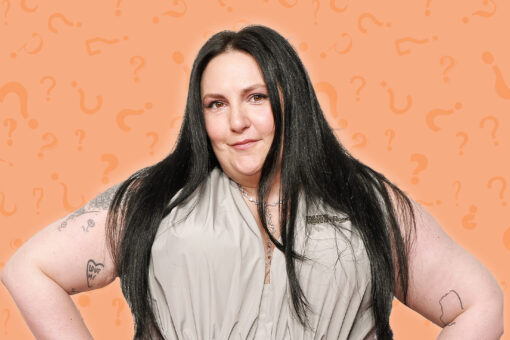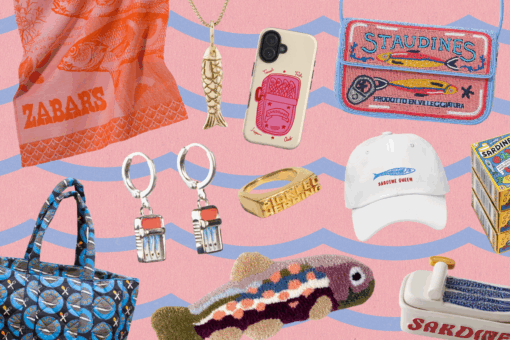Symmetrical faces are perceived as more attractive — I learned that in Psych 101. It makes sense, because symmetrical features indicate healthy genes. But, being that my breasts are lopsided, I wasn’t too thrilled to discover this law of attraction freshman year of college.
I can’t pin exactly when one breast stopped growing and the other just… well, didn’t. In middle school I mustered up the courage to ask my mom for help. I needed extra padding to even out my chest, so she gave me something that I can only describe as a thick, blue yarmulke with velcro. For a while I’d slip it into my bra every day, but I quickly got tired of the cumbersome, uncomfortable makeshift pad.
Still, I hated my breasts, I hated my body, and harboring my dark, embarrassing secret became exhausting.
This year, when I turned 24, I saw a surgeon for a breast reduction consultation. The doctor looked like a younger John Stamos, so I was really keen on going through with it. I’d wasted too much time observing my lopsided breasts in the mirror, and I desperately wanted to wear low cut shirts and ditch my underwire bras for skimpy bralettes. The thing is, individually, I love my breasts: the smaller one, a size B, is perky and the perfect palm size, and the larger one, about one or two cups bigger, is voluptuous and compliments my curvy frame. But ultimately, I just want them to look the same.
In high school, I remember a handful of girls with “Joobs” — Urban Dictionary’s top definition for a Jewish woman’s large breasts — got breast reductions. Though Jewish girls and nose jobs is a popularized stereotype, in my Jewish day school, it seemed that this other corrective surgery was more popular. And the proof is in the pudding: Statistics show that rhinoplasties are on the decline since 2016, while breast reduction surgery has become increasingly more popular.
As I make the moves towards having my own surgery (and deal with my fears of possible regret and scarring), I wanted to talk to other Jewish women who’ve had what are officially called reduction mammoplasties.
I first wanted to know the defining moment that led them to decide to go through with an intensive surgery. For Hannah, 22, that was very clear.
Surrounded by undergarments in a Nordstrom’s dressing room, the then 18-year-old burst into tears. None of the bras fit her 38 double G chest, and even if they did, it wouldn’t matter; they were overpriced and ugly. Her face still wet from crying, Hannah turned to her mom and said she needed to do something about her disproportionate body.
“I would joke with my friends about wearing my bra like a hat because it fit over my head,” she tells me. “But I used to be so nervous to take my shirt off because I felt like a spectacle.” This was a feeling I could relate to.
*Sarah, 22, had a similar moment of clarity when the strapless senior prom dress she tried on in Neiman Marcus wouldn’t pull over her size 34F breasts. She recalls a woman with a thick Russian accent saying that her boobs “are what they are” and that a strapless bra wouldn’t help the matter.
Having been made fun of for her “huuuuuge boobs” by girls in her youth group, Sarah’s shopping experience further solidified her decision to get a breast reduction. At first, her mom was against the idea, but after realizing the extent of the issue, she brought her to a consultation. “The surgeon was like, you’re 19 years old and your boobs should reflect that,” Sarah recalls.
For Mel, 24, she didn’t know surgery was even an option until her mother brought it up. Aware of her daughter’s terrible relationship with her double D breasts, Mel’s mom suggested she get the surgery done right after high school. Being a D3 athlete, it didn’t make sense for her to interrupt the season. Like me, Mel was concerned about scarring, but after conducting her own research, she was on board. “It was more important for me to get the surgery than worry about scarring,” she said.
For these women, making the decision to go through with the surgery was just the beginning of a long, sometimes frustrating process.
For Hannah, she first wanted to make sure that cosmetic surgery is “kosher” for Jews. While she’s Reform and doesn’t follow all of the laws and traditions of Judaism, she still wanted a better understanding of what her faith had to say. After doing some research, she found literature that said if the surgery was medically necessary for mental and physical health, then it was okay. The emotional anguish and severe shoulder pain from her heavy breasts checked off both of those boxes. “It was such a relief,” she says. “I was like yes, I can do this, it’s in line with my values and my religion.”
But then came the matter of payment. Depending on the surgeon, the cost of a reduction mammoplasty can range anywhere from $5,000 to $10,000. Insurance covers breast reductions by body weight, and according to Hannah’s doctor, she was too heavy to qualify for coverage.
Sarah faced a similar battle with insurance. Fortunately, her surgeon was a family friend who bent the rules to grant her nearly full coverage. Since performing Sarah’s surgery, the doctor has squeezed in more young women for reductions. “He saw what a difference it made in my life,” Sarah said.
Insurance companies can change their policies year to year on what they deem medically necessary, which makes it harder for women with painfully large breasts to get the surgery — I know, it’s really messed up. One study actually found that — regardless of the amount of breast tissue removed — 95 percent of patients who underwent breast reduction surgery had a higher quality of life and said they’d go through with it again. The study confirmed that breast reductions can improve physical and psychosocial well-being, which is exactly why Sarah’s doctor twisted his arm to help women without means.
Being that my breasts aren’t painfully large, insurance won’t cover any of the cost of my surgery. But as the study illustrated, the amount of breast tissue removed shouldn’t be a qualifying factor for coverage, anyway.
Although her breasts were painfully large, Hannah grappled with that same issue, and ultimately had to pay for the surgery out of pocket. When the bandages came off her chest 48 hours post-surgery, she thought something was wrong. “I was very concerned that they were going to fall off my body,” she said. “They felt too light, it was weird.”
Sarah felt similarly, post-op. She inherited her Jewish grandmother’s breasts, and after going from a 34F to a 32D, the two cup size difference was almost unbelievable. “I was scared I would get it back, like they would just grow back,” she told me.
As irrational as Sarah’s fear might’ve felt, breast regrowth is a real thing. A year post-op, Mel’s chest bounced back from a C to a double D. “I was like, dude… I’m in high school and I have gross boobs, what is going on with my life?” Mel said. “Like, that’s shitty.”
She hadn’t gone through an intensive surgery for nothing, so Mel scheduled a date for another one — but this time was even more complicated than the first. Typically, recovery entails staying home for two weeks while wearing a surgical bra. After a month of abstaining from physical activity, most folks are back in action. The second time around for Mel wasn’t so simple: She had to use drainage tubes for a week after the procedure to prevent inflammation. “It was nauseating to even think about, really,” she said.
As traumatic as the second surgery was, Mel finally learned to embrace her breasts. She no longer feels the need to hide her chest with high cut shirts, and at last, she can ditch underwire bras for those coveted lacy bralettes. “It’s a whole new world,” she said.
For Sarah, the surgery was also life changing. She can finally run — sports bra free — without feeling self-conscious, and the newfound attention she started receiving from guys made her feel like she was going through a second puberty.
“There’s this big mental thing about it that no one talks about,” Sarah said. “I saw something else in the mirror, it was like a different body image because it literally changed overnight.”
And Hannah? She no longer feels like a disproportionate spectacle. “It felt like my body belonged to me again,” she told me.
Seeing the difference that surgery made in these women’s lives has solidified my decision to get a breast reduction. Since puberty I’ve yearned to cherish my body like the temple feminist Instagram accounts say it is, but I also thought going under a knife to feel good about myself was superficial. Besides, my mom raised me to value my unique features: the bump in my nose, my crooked teeth, my uneven chest.
But after 24 years of trying to love my asymmetrical chest, I’ve accepted what I can’t accept. I’m ready to say adieu to Biggie — the name I not-so-fondly gave my larger breast — and hello to a body I can finally embrace.
*Name has been changed.



